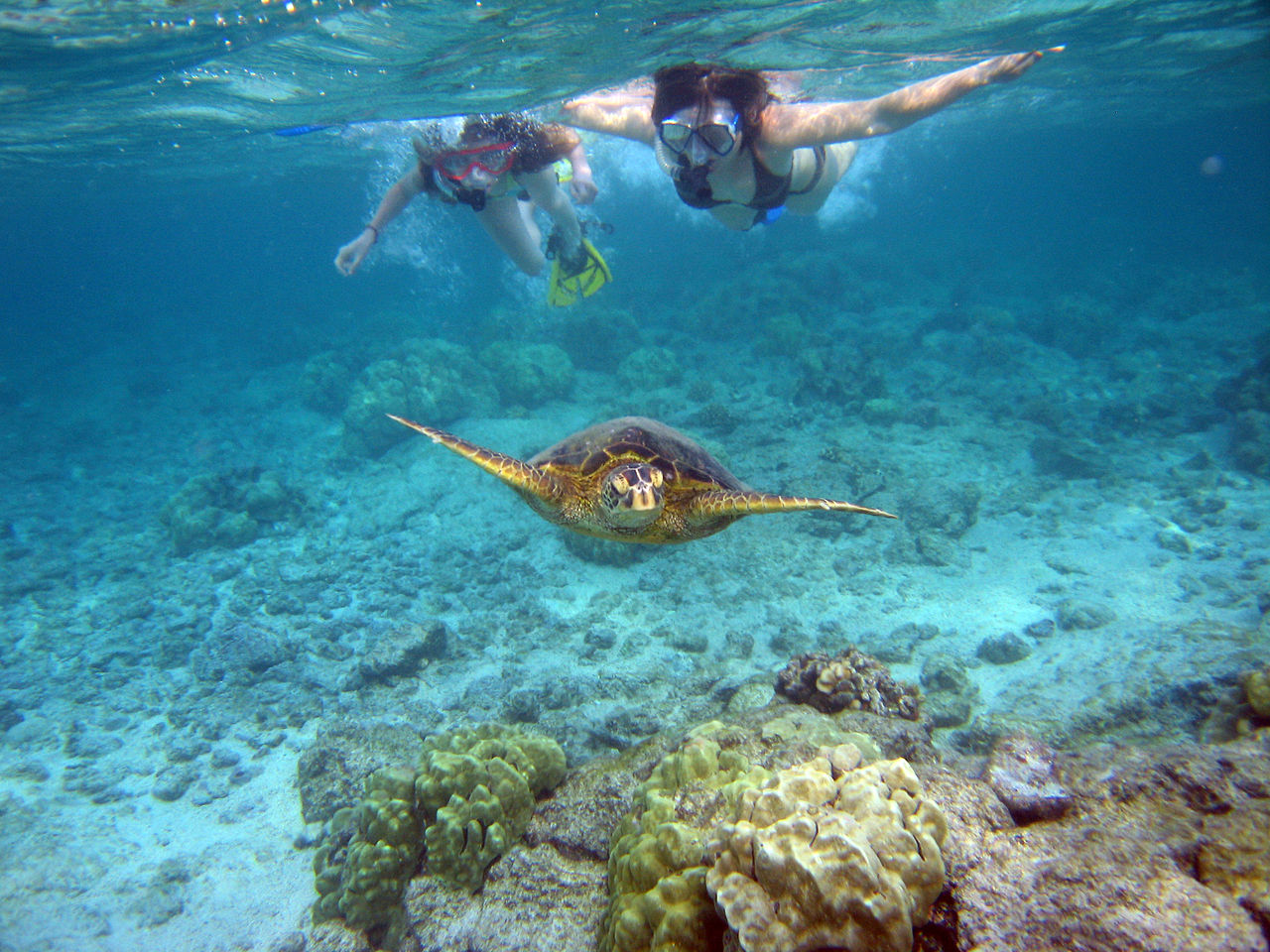A trip to the ocean just wouldn’t be complete without some time spent in the water. Whether it’s our local shores or a faraway tropical isle, we are drawn to swim, splash, and explore. And one of the most accessible ways to enjoy the water and the diverse species of plants, animals, and more that live beneath the surface is snorkeling. But, while every big box store and seaside shop seems to carry the equipment we need – face mask, snorkel, and possibly swim fins, there are very few that provide their customers with the information they need to ensure success.

credit: Vlad & Marina Butsky, wikimedia commons
That’s where guides and resource books/pamphlets come in. The latest offering, from Jesse Miller at jenreviews.com, contains a wealth of information, and covers everything from the history of snorkeling, to equipment care tips, to advice on what precautions we should take while snorkeling. Enjoy these excerpts, and then head over to their website to read the entire guide. Everyone from the not-yet-beginner to the seasoned snorkeler will find something of use.
The brief history of snorkeling is really interesting:
“Variants of the snorkeling tube have been in use for over 5000 years. Archeological evidence suggests that farmers diving for sponges off the island of Crete used hollow reeds to prolong their time under water as early as 3000 BC.
Aristotle’s writings from the 4th century BC describe divers who used straight, hollow tubes – which he compared to the trunks of elephants – to draw air from above the water’s surface. Incidentally, it is Aristotle’s pupil Alexander the Great who is credited with supporting the creation of the first diving bell, another early invention that allowed divers to breathe below the surface by using air trapped in a pocket created by a large bell-shaped object.
The first evidence of curved devices being used for this purpose is from China from the 4th century AD, when hollow rhinoceros horns allowed divers to look downwards or ahead while being submerged under water.
These early versions of snorkeling as well as diving persisted through the years across continents. It isn’t until the 16th century that the first evidence of the modern snorkeling tube appears, and the great Renaissance artist, scientist and inventor Leonardo da Vinci may be who we have to thank for it! His sketches reveal his designs for a mask with two long tubes distinctly bending away from it, the openings of which were kept above the water’s surface with the help of a buoyant, bell-shaped float.”
And the author gives great advice on how to care for your equipment:
“To clean your mask, rub a small amount of soap or toothpaste on the lens with your fingertip in order to remove any grease, and rinse again with freshwater. Using toothpaste to clean your mask can also reduce the likelihood of it fogging up while you are in the water, and eliminate the need for buying defogging solution. Make sure not to use your fingernails as these can cause scratches and reduce visibility the next time you use the mask. Use a soft towel to wipe it dry.
Your snorkel can be cleaned by washing it in a bucket of freshwater and dish detergent and allowing the solution to pass through the tube. Alternatively, you can soak the snorkel in a solution of warm soapy water for half an hour. In either case, follow up by rinsing it thoroughly under running water. Before using your snorkel again – or even before using a new one – you may want to kill germs by giving it a good rinse with some mouthwash.
Fins can also be cleaned using freshwater and dish detergent, with the added help of a scrub to remove anything that may have stuck to them. Be careful not to hurt your hands while doing so and look out for sharp bits of coral!
Store your equipment away from sunlight, heat and fumes as these can cause damage of various sorts, particularly to parts like the seal and mouthpiece that are made of silicone.”
To read more, visit the full article, HERE










0 Comments